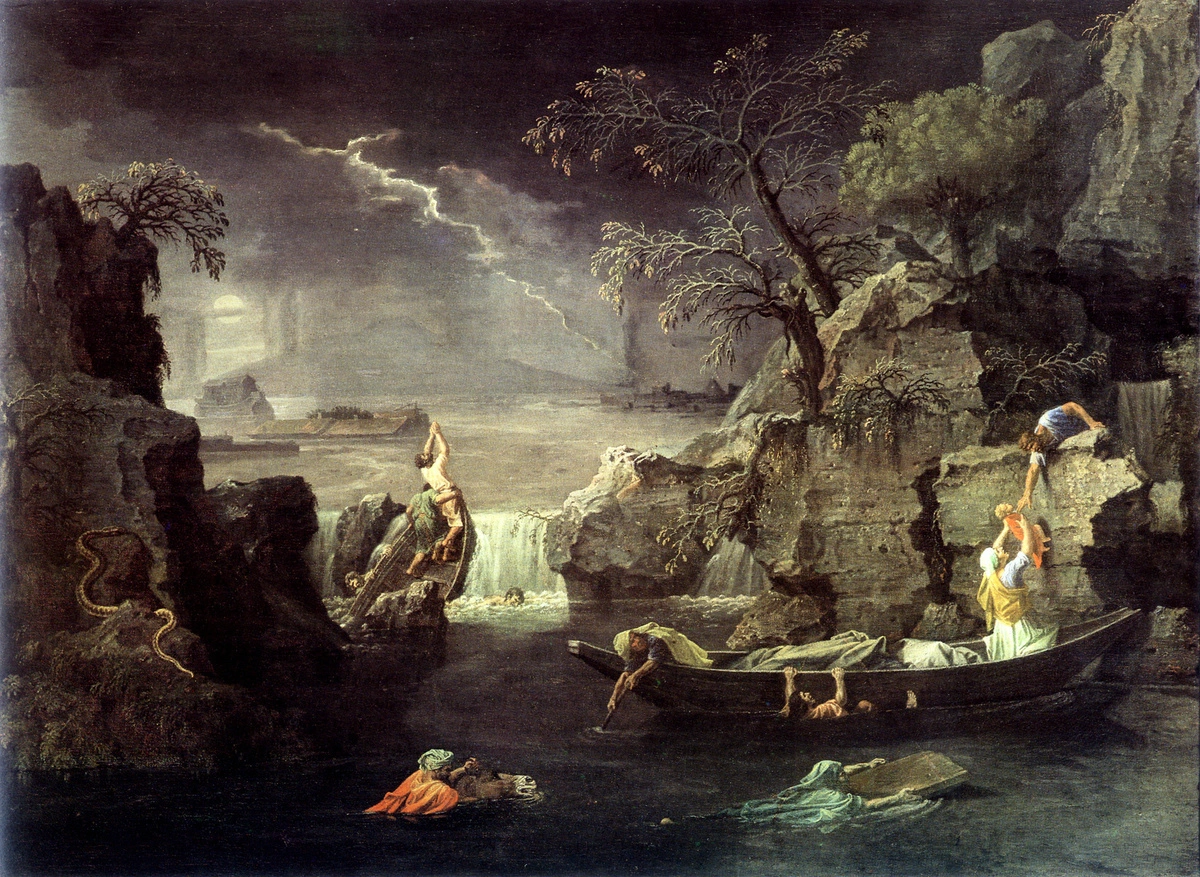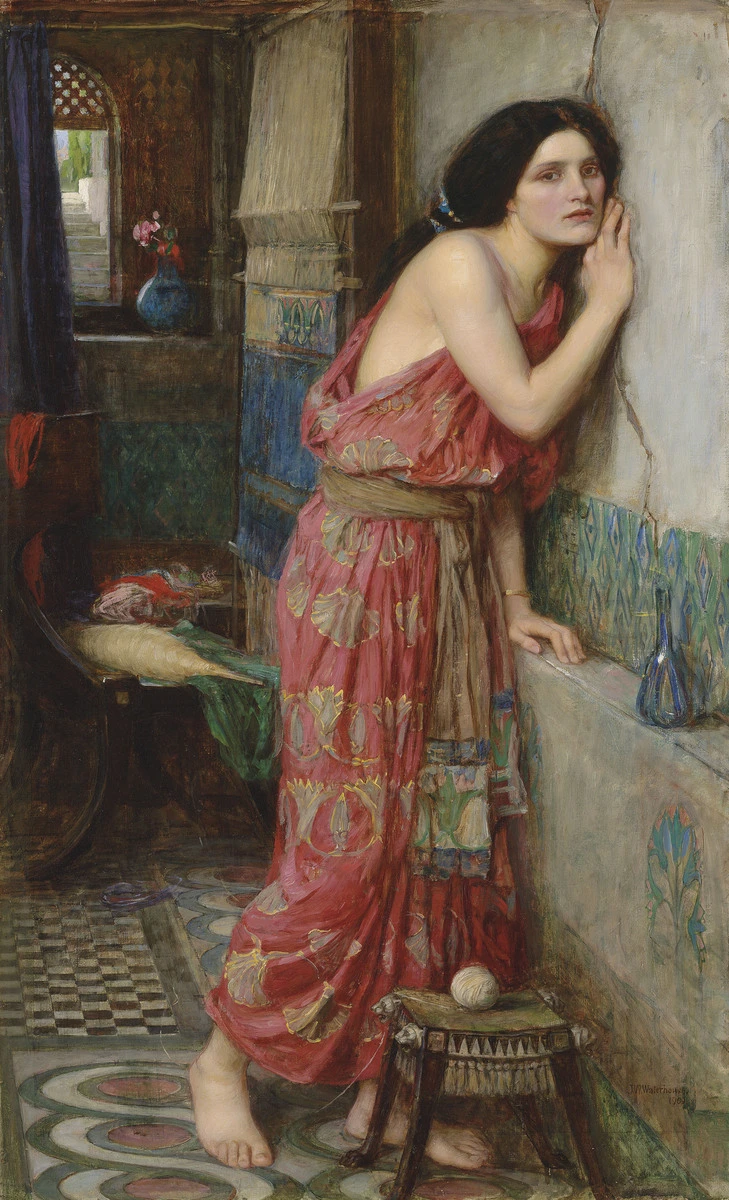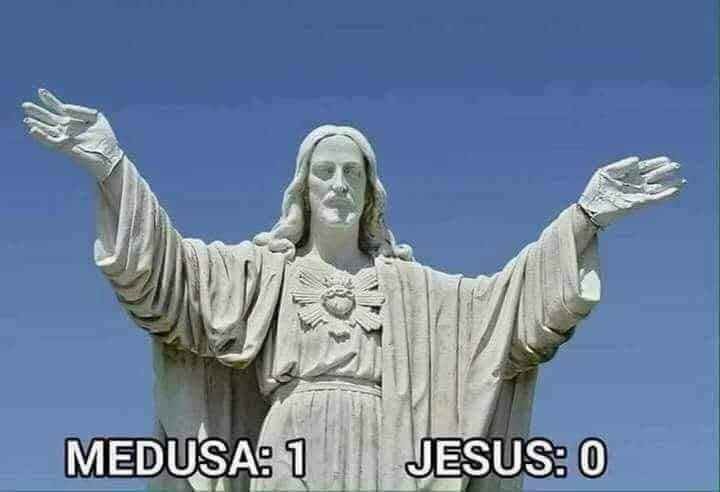What the myths do is they take essential elements of human experience – victory, defeat, shame, betrayal, war, peace – and create a gripping narrative that makes you understand in a very visceral way. They’re great delivery vehicles for some of the most important emotions and events that we experience in life. That’s why they’re so open for adaptation and reinterpretation. You can play with the particulars: the settings, the names, the decor, the time frame. But the bones are very striking, and hard, and they have endured. I think that’s why we keep coming back to them.
Greek mythology is still relevant after all these millennia because it deals with the building blocks of the human experience. Every story is “true”, in the sense that it says something authentic and enduring about our nature. You can be fascinated and disturbed by the world The Hunger Games presents, whether or not you realise it is a version of Theseus’s tale. The mythology well is old and deep, but the water that we draw from it tastes as cool and fresh as if it were newly created.
#mythology

Sandro Botticelli (1445-1510, Italian)
Nascita di Venere
Die Geburt der Venus / The Birth of Venus
Gemälde, Tempera auf Leinwand, 279 x 173 cm, 1485, Uffizien, Florenz
#SandroBotticelli #mythologie #SimonettaVespucci #venus #aphrodite #malerei #renaissance #kunst #art #paintings #gemälde #peinture #mythology #painting
I resume my mythology binge with some Nordic folk tales. Featuring a giant baby impervious to cannons, trolls with 15 heads, and Cinderella hacking the head of a bull for no particular reason. Oh, and witches with noses three feet long or more. Must be strange up north. As for The Twelve Wild Ducks... that's harsh in the extreme.
#Fantasy
#Mythology
#WTAFDidIJustRead
https://decoherency.blogspot.com/2024/12/review-viking-tales.html

Nicolas Poussin (1594-1665, French)
L'hiver
Winter
Gemälde, Öl auf Leinwand, 160 x 117 cm, 1660 - 1664, Louvre, Paris
#NicolasPoussin #mythologie #winter #sintflut #allegorie #malerei #barock #kunst #art #paintings #gemälde #peinture #mythology #deluge #allegory #painting #baroque
This the same "legend" that features a dude whose magical power is being able to stand on one leg for a whole day, and a giant whose dropping eyebrows are held up with pitchforks. Still, an interesting idea.
Magnus Maximus was a Roman figure in the fourth century CE. It is possible that he was the governor of Britain. In 383, his troops proclaimed him emperor. Maximus then invaded Gaul and conquered the Western Roman Empire. Since at least one version of the legend of King Arthur’s European conquests evidently comes from tales of Magnus Maximus, it stands to reason that the similar tale in Culhwch and Olwen has the same origin.
In support of this, the medieval British records reveal a legendary connection between Magnus Maximus and Greece. According to genealogical documents, such as the Harleian MS 3859, Maximus had a son named Anthun. This son appears in various other records as the head of an important dynasty in South Wales. In these records, Anthun is referred to as the “king of Greece.” This is highly significant. Notice that the names Anthun and Arthur are extremely similar. Furthermore, Anthun and Arthur appear to be the only legendary kings of Britain in medieval British records who are also recorded as ruling over Greece.
However, Magnus Maximus did not actually conquer as far as Greece. Yet, his cavalry commander, Andragathius, did conquer in that direction. He led Maximus’ armies as far as Siscia in Croatia in 388. At that time, almost all of the Balkan peninsula was in the administrative territory called the Prefecture of Illyricum. The capital of this prefecture was Thessaloniki in Greece. Therefore, Andragathius did conquer at least part of the territory whose capital was Greece. With these facts in mind, it is very likely that this is the origin of the tradition of Magnus Maximus’ son conquering Greece.
https://greekreporter.com/2024/10/18/legend-king-arthur-conquer-greece/
A look at Edith Hamilton's 1942 "Mythology", which looks at why the Greek myths were super awesome. Even though they're full of weird gods doing weird things, they're still a lot easier to grasp than the later Celtic stories. Character motivations basically make sense and causality is generally clear. Full of violence but only rarely given to bouts of wanton barbarism, they also have characters who are thoughtful and forgiving. She also charts how they evolved over time, with the pinnacle of the storytelling essentially happening as belief was already declining. The stories were versatile, but the demand to make the gods fundamentally nicer was perhaps their undoing. A god you negotiate with is hardly a god at all.
#Mythology
#Religion
#Literature
https://decoherency.blogspot.com/2024/10/review-mythology.html
On the wonderful weirdness that is Celtic mythology and fairy tales. In which Cinderella gets repeatedly eaten by a magical whale or alternatively hacks the head off a bull, a giant acts as bridge, time-travelling poets emerge from chickens, King Arthur is Emperor of Greece and one of his best knights has a mid-life crisis. What's not to like ?
https://decoherency.blogspot.com/2024/10/review-epic-celtic-tales.html
https://mstdn.games/@GaymerGeek/113142359506466531 GaymerGeek@mstdn.games - Ever wonder why we carve pumpkins on Halloween? It's all because of Stingy Jack, an Irish trickster who outwitted the Devil but was doomed to wander the Earth with a carved turnip lantern. That's how Jack-o'-lanterns came to be! 🎃 #folkloresunday #folklore #mythology

John William Waterhouse (1849-1917, English)
Thisbe
Gemälde, Öl auf Leinwand, 97 x 59 cm, 1909
#JohnWilliamWaterhouse #mythologie #ovid #thisbe #pyramus #babylon #malerei #realismus #kunst #art #paintings #gemälde #peinture #painting #realism #mythology

Emily Carr (1871-1945, Canadian)
Blunden Harbour
Blunden Harbour is a Kwatiutl village on the B.C. mainland coast, at the mouth of the Queen Charlotte Strait
Gemälde, Öl auf Leinwand, 130 cm x 94 cm, 1930, National Gallery of Canada, Ottawa
#EmilyCarr #mythologie #FirstNations #kunst #art #paintings #gemälde #peinture #mythology
Review : The Celtic Myths That Shape The Way We Think (II)
Concluding part of the review, looking at more general themes rather than specific stories. Including :
- How there are so many common themes among all the European pagan myths, including primeval wars between the gods, "All Father" figures who fight sea monsters, and common storytelling techniques that focus on detailed, specific elements of how the fantasy world works
- How the Celtic myths were told using a wide variety of different and subtle techniques, not always in a modern linear style but more aimed as instruction... yet using sophisticated methods to tell a good story
- The subtlety and egregiousness of Celtic magic, from some dude who can suck up the sea (with the unlikely name of "Suck son of Sucker") to oddly specific curses
- The outright bizarre, including one poor guy who dies of depression because he can't fit a handle to his favourite knife. Also, racist fairies
https://decoherency.blogspot.com/2024/07/review-celtic-myths-ii.html
Review : The Celtic Myths That Shape The Way We Think (I)
More mythology funtimes ! Completing the Thames & Hudson mythology series with the Celtic section. Here I look at my three favourite stories covered in Mark William's excellent book.
- King Arthur wasn't originally a king but a leader of a small warband of magical superheroes a la Marvel; in later versions he tries to kill a bunch of babies and a necrophilliac witch tries to ensare Lancelot... there's a lot of stuff in the early stories that doesn't get told much any more
- Merlin began as a king who suffered post-traumatic stress disorder and went off to live in the forest, where he went a bit mad and started laughing at people because he could see the future
- And Blodeuwedd, the woman made of flowers, created to provide a wife to dodge a curse but turns on her creators, ending up being turned into an owl and with nobody getting anything much of what they wanted at all.
https://decoherency.blogspot.com/2024/07/review-celtic-myths-i.html
"No comment at this time"... beyond, "but of course this is the #cult #TrumpVirus narrative:
MAGA Narratives about the Trump Assassination Attempt
Blaming the terrible violence on "fascists" who call Trump an authoritarian
#GQP #disinformation #narrative #DoubleSpeak #tribalism #evil #mythology #truth #MAGAts #delusion #cognitive
Review : The Real Middle-Earth Part 2
Concluding my review of Brian Bates' misnamed but insightful look at the world view of the Dark Age Britons. This one continues along a more philosophical bent, looking at the interconnectedness of all things (but which wasn't the sort of thing you'd see in a Disney movie), fate, free will, and how this contrasts with the view of time and fate postulated in Dune.
#Mythology
#History
#Religion
#SciFi
#Philosophy
https://decoherency.blogspot.com/2024/06/review-real-middle-earth-2.html
Review : The Real Middle-Earth, Part 1
I now return to my regular series "Rhys Does Mythology" with a look at Brian Bates' misnamed The Real Middle-Earth. Having almost no connection to Tolkien whatsoever, and generally being rather badly-written, the compensation is a really thorough look at Dark Age beliefs. At least, insomuch as we can gleam anything at all about pre-Christian ideas, this is well done. Covers how Christianity stole pagan ideas for itself, why Roman cities remained largely uninhabited despite being in a serviceable state, and then veers off into more philosophical territory... musings on the similarities between virtual reality and mystical experiences and suchlike. But what else are you going to read ? The news ? Hah !
What Bates notes repeatedly is that Christianity rarely claimed that the magical beliefs of the locals weren't real. Rather Christian missionaries didn't seek to persuade anyone that dragons or witches or fairies didn't exist, because everyone knew perfectly well that they did – including Christians themselves. Instead they reframed the beliefs. Magical things now became the purview of God, or the angels, demons or the Devil (Christianity, as I've said, never really being all that fully-fledged in its professed monotheism). Indeed some early missionaries were even given explicit instructions to incorporate the local beliefs this way. A letter from Pope Gregory to St Augustine (594 AD) instructed him to rededicate temples rather than destroy them, replace pagan idols with saintly iconography, and allow people to "build their booths of green leaves and slay their bulls".
It wasn't all noble inclusivity though. What Christianity did, with increasing vigour, was attempt to seize a monopoly on magic. It would literally demonise anyone practising magic who wasn't a Christian : hence, for example, wise women becoming witches. It didn't do away with the supernatural but it recast it morally, from fundamental, normal beliefs that everyone accepted, into something divisive, something to fight against... unless, of course, the Church deemed that it was a work of God. I suppose you could call it a Dark Age culture war.
...
Once again, I've messed up with my interpretation of Beowulf : very stupidly, a few posts ago I said, "the hoard in Beowulf is just an ancient, pre-existing collection that the dragon takes over to nobody's disadvantage." This was a dumb thing to say, because Bates emphatically emphasises the point of burying hoards and other grave goods : they were returned to the realm of the ancestors.
Crucially, the dragon doesn't do anything until the hoard is disturbed. Even Tolkien, who pointed out the cosmic symbolism of the dragon through its inherently magical nature, didn't really pick up on this, being more concerned with the literary power of the work than its historical insight into Dark Age thinking. But if we accept that goods were returned to the earth (as they were in other liminal places like lakes and streams) as a way of giving them back to the ancestors, then the symbolism of the dragon is only enhanced. The dragon protects the past. Bates argues it even represents the end of one cycle of time and the beginning of another, with other dragons being notably more mythological in scale and scope.
#Mythology
#History
#Archaeology
#Religion
https://decoherency.blogspot.com/2024/06/review-real-middle-earth-1.html
Review : The Norse Myths That Shape The Way We Think (2/2)
Concluding review of the The Norse Myths book. This time I cover the transgender and feminist aspects and how the far right have been extremely selective in their appropriation of the Viking stereotype. Then I move on to the more philosophical stuff : fate, free will, the World Tree, perpetual regeneration and so on.
#Mythology
#Politics
#Religion
#Fantasy
#Feminism
#Philosophy
https://decoherency.blogspot.com/2024/06/review-norse-myths-2.html
Review : The Norse Myths That Shape The Way We Think (1/2)
My mythology binge continues with the Norse book of the Thames & Hudson "that shape the way we think" series, here looking at the themes of trickery and tragedy. Norse gods seem to be inveterate liars even more so than the Greeks, and they also have a much stronger fatalist streak about them. Well, if you knew you were going to eventually be eaten by a giant snake and burned by a fire demon, I suppose you wouldn't really care much about telling porky-pies.
#Mythology
#Politics
#Religion
#Fantasy
https://decoherency.blogspot.com/2024/06/review-norse-myths-1.html








.jpg!Large.jpg)
